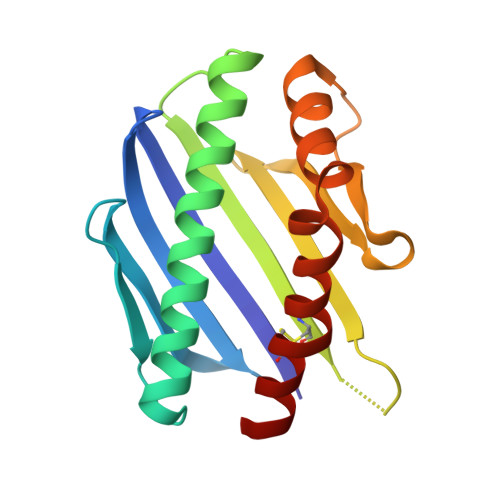Endothelial protein C receptor binding induces conformational changes to severe malaria-associated group A PfEMP1.
Rajan Raghavan, S.S., Turner, L., Jensen, R.W., Johansen, N.T., Jensen, D.S., Gourdon, P., Zhang, J., Wang, Y., Theander, T.G., Wang, K., Lavstsen, T.(2023) Structure 31: 1174-1183.e4
- PubMed: 37582356
- DOI: https://doi.org/10.1016/j.str.2023.07.011
- Primary Citation of Related Structures:
8C3Y, 8C44 - PubMed Abstract:
Severe Plasmodium falciparum malaria infections are caused by microvascular sequestration of parasites binding to the human endothelial protein C receptor (EPCR) via the multi-domain P. falciparum erythrocyte membrane protein 1 (PfEMP1) adhesion ligands. Using cryogenic electron microscopy (Cryo-EM) and PfEMP1 sequence diversity analysis, we found that group A PfEMP1 CIDRα1 domains interact with the adjacent DBLα1 domain through central, conserved residues of the EPCR-binding site to adopt a compact conformation. Upon EPCR binding, the DBLα1 domain is displaced, and the EPCR-binding helix of CIDRα1 is turned, kinked, and twisted to reach a rearranged, stable EPCR-bound conformation. The unbound conformation and the required transition to the EPCR-bound conformation may represent a conformational masking mechanism of immune evasion for the PfEMP1 family.
Organizational Affiliation:
Centre for Medical Parasitology, Department of Immunology and Microbiology, University of Copenhagen, and Department of Infectious Diseases, Rigshospitalet, Copenhagen, Denmark.

















